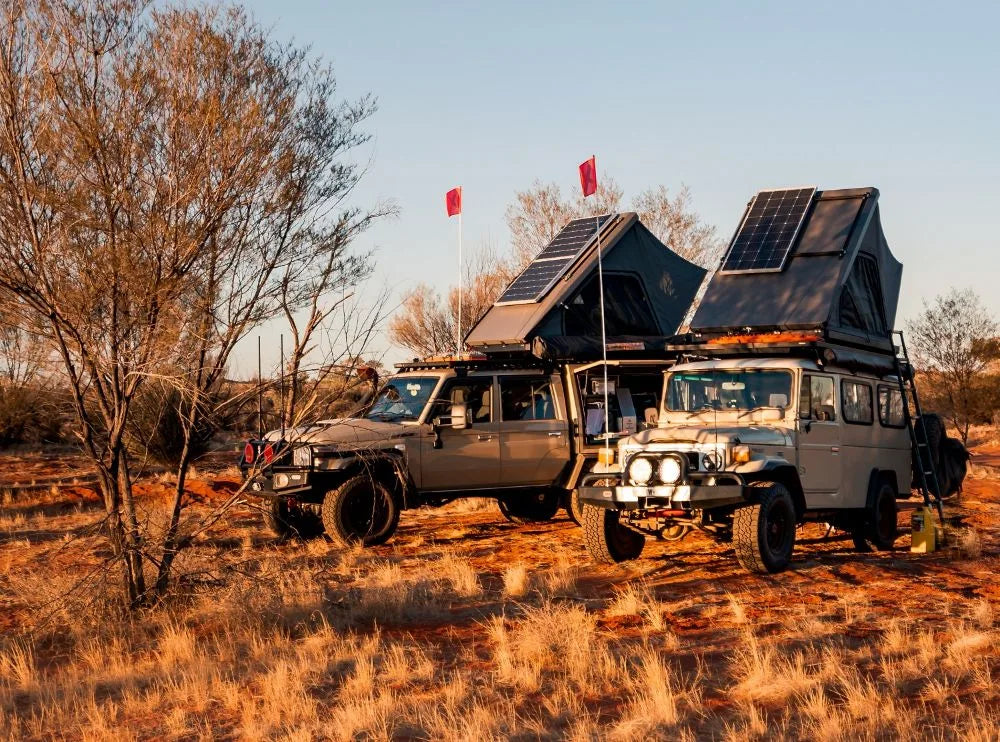
How to Set Up a Dual Battery System for Camping: A Simple, Step-by-Step Guide
How to Set Up a Dual Battery System for Camping: A Simple, Step-by-Step Guide
Camping is all about escaping the hustle and bustle of everyday life, but that doesn’t mean you have to leave behind your essential gadgets and equipment. If you’re planning a 4x4 camping trip or any off-grid adventure, ensuring you have a reliable power source is a must. That’s where a dual battery system comes into play. A dual battery system allows you to power your devices without draining the main battery of your vehicle, giving you the freedom to roam without worries.
Ready to get started? This step-by-step guide will walk you through how to set up a dual battery system that’ll keep you powered up, even in the wild.
Why You Need a Dual Battery System for Camping
Before diving into the setup, let's quickly touch on why a dual battery system is perfect for camping:
- Off-Grid Power: With a dual battery system, you can power up devices like lights, fridges, phones, and GPS without worrying about running down your main vehicle battery.
- Extended Trips: If you're heading into remote areas, you'll need power for extended periods. A dual system ensures you don’t have to compromise.
- 4x4 Camping Setup: Whether you're off-roading or camping in your 4x4, a dual battery setup offers the flexibility to enjoy off-grid living without sacrificing convenience.
Step 1: Choose the Right Batteries
The first thing you need to consider when setting up a dual battery system is the battery type. Most dual battery systems use one of two types:
- AGM Batteries: Absorbent Glass Mat (AGM) batteries are reliable, durable, and maintenance-free. They’re a popular choice for off-road adventures due to their resistance to vibration and ability to handle deep cycles.
- Lithium Batteries: If you want a lighter and more efficient option, lithium batteries are a great choice. They offer faster charging times and longer life spans but can be a bit pricier.
Once you’ve chosen your battery type, it’s important to make sure your secondary battery has enough capacity to power your devices during your trip.
Step 2: Install the Battery Isolator
To prevent the two batteries from draining each other, you need to install a battery isolator. This device ensures that when your vehicle is running, the alternator charges both batteries. When the engine is off, the isolator prevents your auxiliary battery from discharging into your main battery.
Installation Tips:
- Mount the isolator in a location that's easily accessible.
- Make sure it's properly wired between the two batteries, ensuring the alternator charges both.
- Double-check that the isolator is suitable for your battery type.
Step 3: Connect the Batteries
Now it’s time to connect the batteries. Here's how to do it:
- Mount the Auxiliary Battery: Choose a safe location within your vehicle to mount the auxiliary battery, typically in the engine bay or in the rear of your vehicle.
- Run the Cables: Use thick cables to run from the isolator to the auxiliary battery. It’s important to use cables that can handle the current draw of your devices.
- Ensure Proper Connections: Ensure all connections are tight and free from corrosion. A loose or corroded connection can lead to power loss or damage.
Step 4: Set Up Power Distribution
Now that your batteries are set up, you need to distribute the power to your devices. This can be done using a DC-DC charger or a fuse box, depending on the complexity of your setup.
- DC-DC Chargers: These devices allow you to charge your auxiliary battery from your vehicle’s alternator while also preventing overcharging. They’re a great option for keeping your system running smoothly.
- Fuse Box: If you're running several devices off your dual battery system, consider installing a fuse box to keep things organized and safe.
Step 5: Test Your Setup
Before heading out on your adventure, make sure to test your dual battery system. Start your vehicle and check that both batteries are charging. Run a few devices off the auxiliary battery to make sure everything is working as expected.
Step 6: Maintenance and Monitoring
Regular maintenance is key to ensuring your dual battery system lasts for the long haul. Here are a few things to keep in mind:
- Check Battery Health: Periodically inspect both batteries for wear and corrosion. Replace any damaged components.
- Monitor Power Usage: Keep an eye on your power consumption to avoid overloading the system, which could result in drained batteries.
Conclusion
Setting up a dual battery system for camping is a smart and essential step for anyone who wants to ensure a smooth and enjoyable off-grid experience. By following these simple steps, you’ll be able to enjoy your 4x4 camping trip without worrying about running out of power. Whether you're powering up a fridge, lights, or electronics, your dual battery system will give you peace of mind so you can focus on what truly matters—your adventure.
Are you ready to take your camping experience to the next level? Start setting up your dual battery system today and get ready to explore the great outdoors with reliable power at your fingertips!
